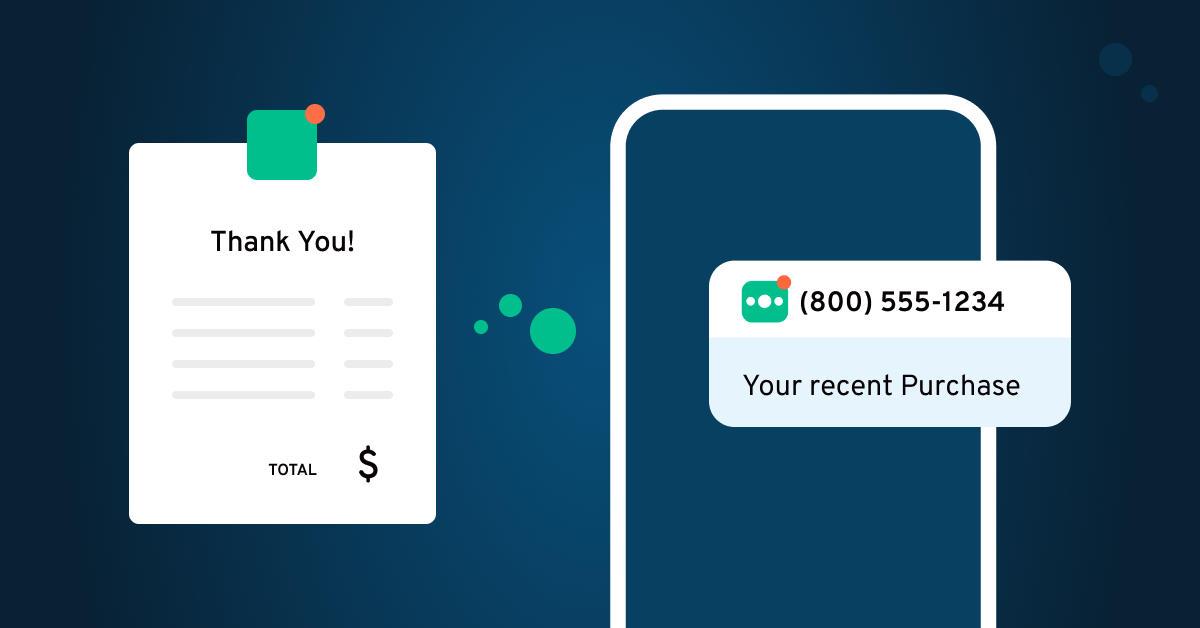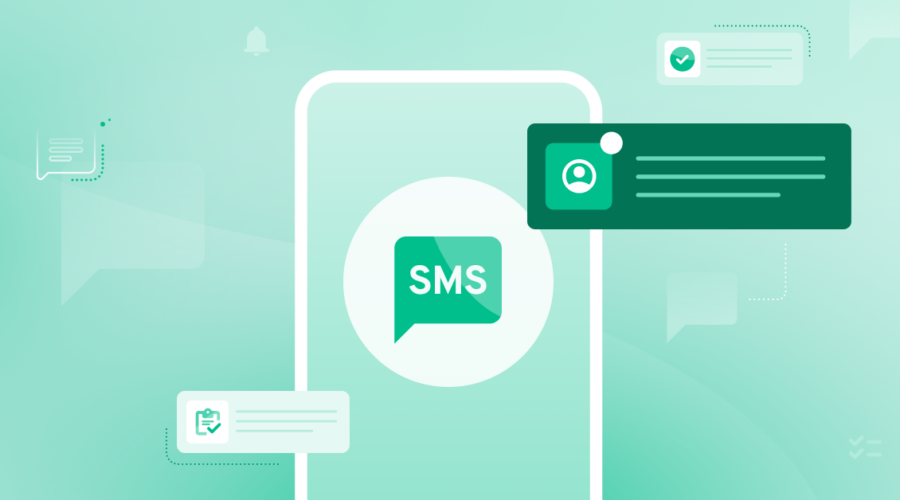As more of our lives move online, it’s surprising how often we still receive paper receipts for purchases. But as we continue to rely on our phones for everything else, why not make them where we get receipts for our purchases as well?
With many point of sale companies already offering receipts over text message (SMS), let’s look at the reasons why your business should, and how to go about doing it.
Why should your business move to paperless SMS receipts?
There are several reasons to make the move to SMS receipts. There are customer experience and environmental reasons, but to be honest, at the time of this writing we’re in an unprecedented time of social distancing and avoiding contact with others, and there’s good reason to move to paperless receipts over SMS.
Save on paper waste
We’re all familiar with those 2 mile long receipts, and we all know what we do with them when we get them—throw them in the trash. I think personally the last time I saved a receipt was because I had to have it for a warranty on an item I’d bought, and once that warranty expired, I threw it away (probably about 2 years too late to be honest).
We’ve moved so much of our lives away from paper and onto digital formats—communications, writing, reading, research, shopping—that moving our proof of purchase online makes sense, too.
A better customer experience
If you need to return something you have to have the receipt, which we’ve already established you probably threw away as soon as you stepped out the door. Moving to paperless SMS receipts makes it easier for you customers to store and retrieve their receipts when they need them—I personally keep any I get in a folder that I can reference for expense reports, warranties, and returns.
When you purchase something from an online only retailer you rarely get any physical proof of purchase, with receipts coming in the form of emails, texts, or purchase history attached to an account. Why shouldn’t you get the same experience when you shop at a brick and mortar location?
Reduce the need for contact with customers
At the time of this writing we’re living in unprecedented times. Stay-at-home orders and social distancing have become the norm. When customers do have to make those essential trips, limiting contact is the best way for your business to protect your employees and your customers.
Sending receipts over SMS allows for a contactless interaction between employee and customer while still providing the customer with the proof of purchase they may need for potential returns or warranties.
Get a response on those customer surveys
We all know the line—”Go to this website, put in this code, and fill out a short survey to be entered into a drawing for….” something. But since we all throw away our receipts with that information on it, when was the last time you filled one out?
By sending a receipt over SMS, your business can easily embed trackable links to surveys that make it easier for your customers to provide you with the valuable feedback you crave.
How to set up SMS receipts
Sending SMS receipts isn’t that hard, but it does require your business to make a few decisions, make sure you have the proper permissions, and have developer resources.
1. Choose the type of number you’ll be sending SMS from
Before you start sending SMS receipts to your customers, you have to decide what type of number you’ll be using. You have three options:
- Short codes: Good for one-way communications, if your business already has a short code, it’s an ideal way to send receipts to your customers.
- Toll-free: Most businesses already have toll-free numbers, but did you know they can be text-enabled? Doing so allows you to send receipts from a number that your customers may already associate with you.
- Local A2P: This allows you to use local numbers to send high-volume, A2P (application-to-person) messages to your customers. Using this type of number should only be considered if locality is a concern.
Make sure you have the required opt-in
Before you can send your customers a text message, you have to get the proper opt-in. We’ve covered opt-in requirements and logistics in the past, but as a refresher, SMS receipts will fall under Express Consent for an informational use case.
What does that mean? It means at the time of purchase you can offer customers the option to receive their receipts via SMS by entering their number and checking a box on the screen (right now, with COVID being a concern, you can accept this verbally so the customer doesn’t have to touch anything), but that you can’t use that number to market to them (which requires a different type of consent).
Provide your developers with the necessary APIs
Since SMS receipts only require you to be able to send a text message, that’s all you’ll need to develop. Bandwidth’s APIs make it easy for your team to embed the ability to send SMS into your software or application. Here’s a sample of the code you’ll need:
require 'bandwidth_messaging'
include BandwidthMessaging
messaging_client = BandwidthMessagingClient.net()
messaging_controller = messaging_client.client
body = MessageRequest.new
body.application_id = "123"
body.to = ["+18888888888", "+17777777"]
body.from = "+19999999999"
body.text = "Greetings from Bandwidth!"
messaging_controller.create_message("456", body)
To get more information on Bandwidth’s APIs, check out our Developer Resources site.



